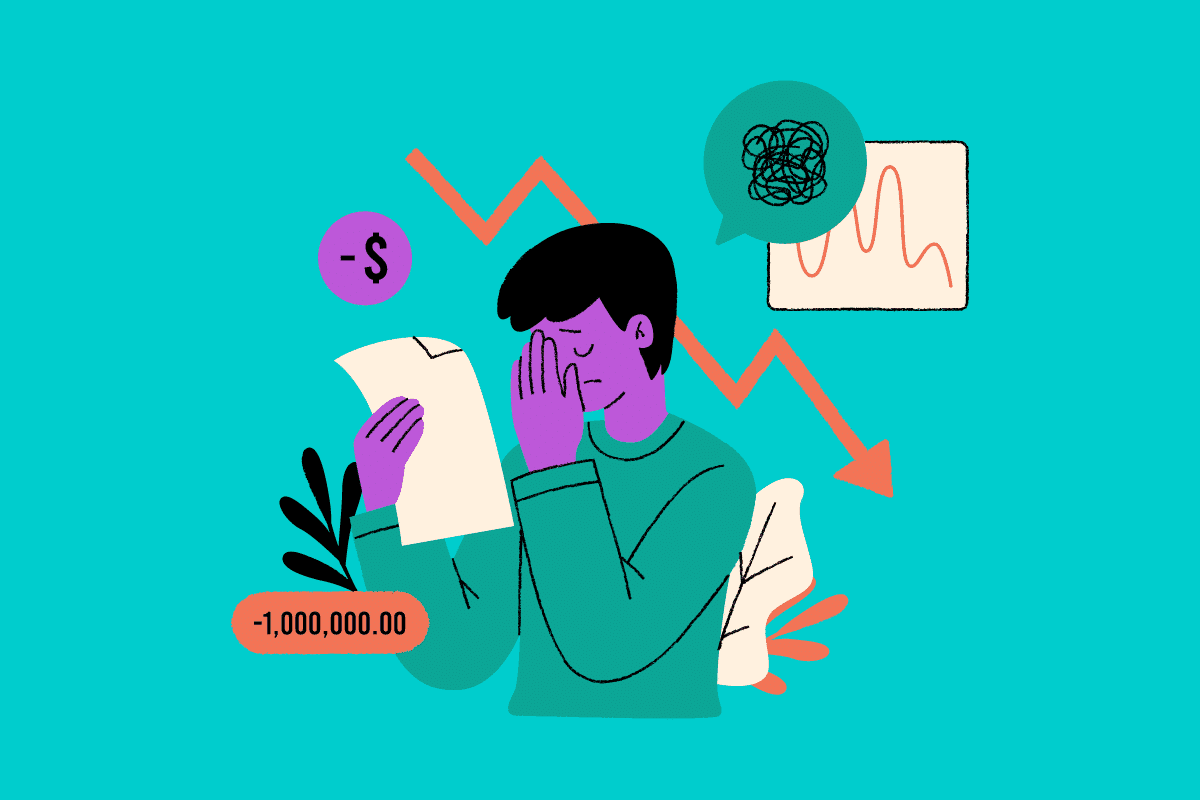The Top 5 Bankruptcy Alternatives For Canadians Struggling Financially
By Heidi Unrau | Published on 07 Feb 2024

Is crushing debt making you feel overwhelmed and hopeless? There are bankruptcy alternatives that offer a more positive path forward without the long-term impact on your credit score. Bankruptcy should be considered as a last resort. Exploring all available options is important to find the right solution for your unique situation. In this article, we will delve into the top 5 bankruptcy alternatives available in Canada.
Debt Consolidation Loan
Debt consolidation involves taking out a single loan to pay off multiple debts. Doing this simplifies your financial situation by consolidating your debt into one easy monthly payment, often at a lower interest rate. Not only can this potentially lower the amount of interest you pay over time, but it can also help you pay off your debt faster, as more of your payment goes toward the principal rather than interest.
A consolidation loan is best suited for people with a good credit score who have multiple high-interest debts like credit cards, payday loans, and personal loans from private lenders.
There are three primary ways to consolidate your debts in Canada:
- A loan from a bank or credit union
- A loan from a private lender
- A credit card balance transfer to a low-interest credit card
Debt Consolidation Loan from Banks & Credit Unions
Traditional financial institutions, such as banks and credit unions, offer debt consolidation loans specifically to help borrowers streamline multiple debts. You’ll need to have a good credit score, as these institutions typically have stringent criteria for lending.
If you qualify, you can benefit from competitive interest rates and structured repayment plans. Furthermore, establishing a good relationship with a bank or credit union can open doors to other financial products in the future.
Debt Consolidation Loan from Private Lenders
Alternative lenders, including private online lenders and peer-to-peer platforms such as GoPeer, provide another debt-consolidation avenue. These platforms often have more flexible lending criteria. This makes them a viable option for those who might not qualify for traditional bank loans.
However, their interest rates are typically higher compared to banks or credit unions. Yet, they often offer quicker approval processes and can be a lifeline for individuals seeking immediate financial relief.
Transferring Debt to a Low-Interest Rate Credit Card
Opting to transfer your credit card balance to a low-interest or zero-interest credit card makes for another popular consolidation strategy. You may know this tactic as a balance transfer. This approach involves moving your high-interest debts onto a card that offers a promotional period with low or zero interest.
Above all, aim to pay off as much of the principal as possible during this period to maximize savings on interest payments. However, read the fine print for fees or a standard interest rate that kicks in once the promotional period ends.
Credit Counselling
Another bankruptcy alternative is to work with a Credit Counselling Agency. This involves meeting with a trained professional to create a personalized debt repayment plan. For some people, that plan is as simple as restructuring your budget. For others, your counsellor may need to negotiate with your creditors to lower interest rates or waive fees.
Credit counsellors also provide you with educational resources, financial advice, and counselling sessions to address your debt and improve your financial management skills. They provide ongoing support and guidance to help you reach your goals. Credit counsellors also set you up for success by helping you understand your credit report and how to improve your score.
One more plus: the best credit counselling services in Canada typically offer a free, no-obligation consultation. Simply, talking with a professional leaves no trace on your credit history. However, if you decide to move forward with a debt management plan that involves negotiating with your creditors, that could have an impact on your credit score.
[Offer productType=”OtherProduct” api_id=”64fcd940ed330e2d875a4c52″]Debt Management Plan
Credit counselling agencies, such as Consolidated Credit Counseling Services of Canada, commonly offer this option. This program allows you to repay your debts in full, typically over three to five years.
A debt management plan generally involves a credit counsellor negotiating with creditors on your behalf to adjust the terms of your loans and credit products. Then your eligible debt is consolidated into a single monthly payment. In most cases, the payment is made to the credit counselling agency, then your counsellor disperses portions of it to your creditors.
The nice thing about this bankruptcy alternative is that it provides a structured repayment schedule without having to apply for a consolidation loan. With a clear plan in place, you’ll know exactly when you’ll be debt-free. This can help you stay motivated and focused on your goal.
Even better, you’ll pay reduced interest rates. By securing lower interest rates, credit counselling agencies can save you money in the long run by reducing the total amount of interest you’ll pay.
On the downside, a debt management program could impact your credit file. Although it generates a note in your credit report, credit bureaus don’t factor it into a credit score. However, most creditors won’t lend to people who are on a debt management plan. And in most cases, a condition of the plan is that you do not apply for any new credit until you complete the program.
Also, this debt repayment plan can improve your credit score when you make your payments on time. This can account for 35 percent of your score, setting you up for a better ranking in future. Since you’re not applying for new credit and creating opportunities for hard checks, that part of your record stays clear.
Informal Debt Settlement
An informal debt settlement allows you to negotiate directly with your creditors to reduce the total amount you owe. While you could save up to 50% of what you owe, proceed with caution.
Informal settlements often require a lump-sum payment or a very short-term repayment plan. Moreover, if you settle for less than the full amount, it could negatively impact your credit score. This type of bankruptcy alternative will result in a mark on your credit file that indicates you settled for less than the total amount owed. This notation can remain on your credit report for up to 6 years and potentially reduce your score.
Engaging in informal debt settlement means communicating and negotiating credit card debt settlement yourself. For most people, this task might feel daunting given some creditors’ hesitance to accept reduced payments. However, with the right approach and expert assistance, you can reach a mutually beneficial agreement.
Consumer Proposal
A consumer proposal is a legally binding process administered by a Licensed Insolvency Trustee. This bankruptcy alternative involves submitting an offer to your creditors to pay back a percentage of what you owe over a defined period of time, up to 5 years.
This option allows you to avoid declaring bankruptcy while granting you legal protection from your creditors. A licensed insolvency trustee will work with you to determine an affordable monthly payment plan based on your income and assets. This proposal then goes to your creditors for their consideration. If the majority of your creditors accept the proposal, it becomes legally binding for all of them.
It also offers you legal protection. Once you file a consumer proposal, your creditors cannot take legal action against you or pursue any further collection efforts. This is called a “stay of proceedings” and can provide you with peace of mind and the opportunity to focus on rebuilding your financial future.
On the downside, your credit rating will move to an R7 rating. The R7 rating stands two points lower than an R9 – the worst rating possible reserved for extreme cases and bankruptcies. Equifax and TransUnion leave it there for six years from the date you sign the proposal or three years from the day you make the final payment. It depends on which one comes sooner.
What Is a Personal Bankruptcy in Canada?
A personal bankruptcy creates a legal declaration that an individual cannot repay their debts. It involves surrendering many of their assets to a licensed insolvency trustee, who will administer the bankruptcy proceedings. The trustee acts as a mediator between the debtor and the creditors, ensuring a fair and equitable process for all parties.
Bankruptcy serves as a last resort for individuals who have exhausted all other options for resolving their financial difficulties. It provides a fresh start by discharging certain debts, allowing individuals to rebuild their financial lives. However, not all debts disappear via bankruptcy. Certain obligations, such as child support, alimony and student loans, remain.
Filing for bankruptcy is a serious decision that can have lasting effects on your financial well-being. It will remain on your credit report for up to seven years. As a result, it makes it challenging to obtain new credit or secure favourable interest rates. This can hinder your ability to purchase a home or lease a vehicle. It can even disqualify you for certain job opportunities that require a good credit standing.
Furthermore, you may lose certain assets, including your home or vehicle in the process. While bankruptcy can provide immediate relief from overwhelming debt, you must weigh the long-term consequences.
Evaluating Your Financial Situation
Before jumping into any particular bankruptcy alternative, take time to evaluate your financial situation thoroughly. Understanding the root causes of your financial struggles will enable you to choose the most suitable alternative. Let’s explore how you can identify your financial struggles and the importance of financial planning in finding a way out.
When it comes to evaluating your financial situation, take a comprehensive approach. Start by examining your income sources and expenses. Do you earn enough to cover your monthly bills and necessities? Where can you cut back on spending? By analyzing your income and expenses, you can identify any gaps or areas of concern.
Also, consider your debt load. Take a moment to gather all your financial statements and make a list of your outstanding debts. This includes credit card balances, loans, and any other financial obligations you may have. Understanding the total amount of debt you owe will give you a clearer picture of your financial situation.
Ultimately, you will decide which path suits you best. These circumstances could persuade you to file for bankruptcy:
- your combined minimum debt payments exceed your normal monthly income
- you have more than one debt in the collection phase
- your creditors threaten legal action
- you exhaust all options for paying down your debts but you still cannot them
- you have large debts that you can’t repay
- you’ve fallen behind on your mortgage payments and are in danger of foreclosure
However, if you still think you can recover, you have choices to restore your financial health. Each one will take discipline and some help to develop new habits so you stay on track.
The Bottom Line
When you feel stressed about your finances, you may not see a way out. Yet, you have five different choices to pull your head back above water. Depending on the severity of your situation, you may have no option but to file for bankruptcy. However, Canada has several professionals and organizations to help you with debt consolidation and other plans to turn things around. You just need to seize the one that works best for you.
